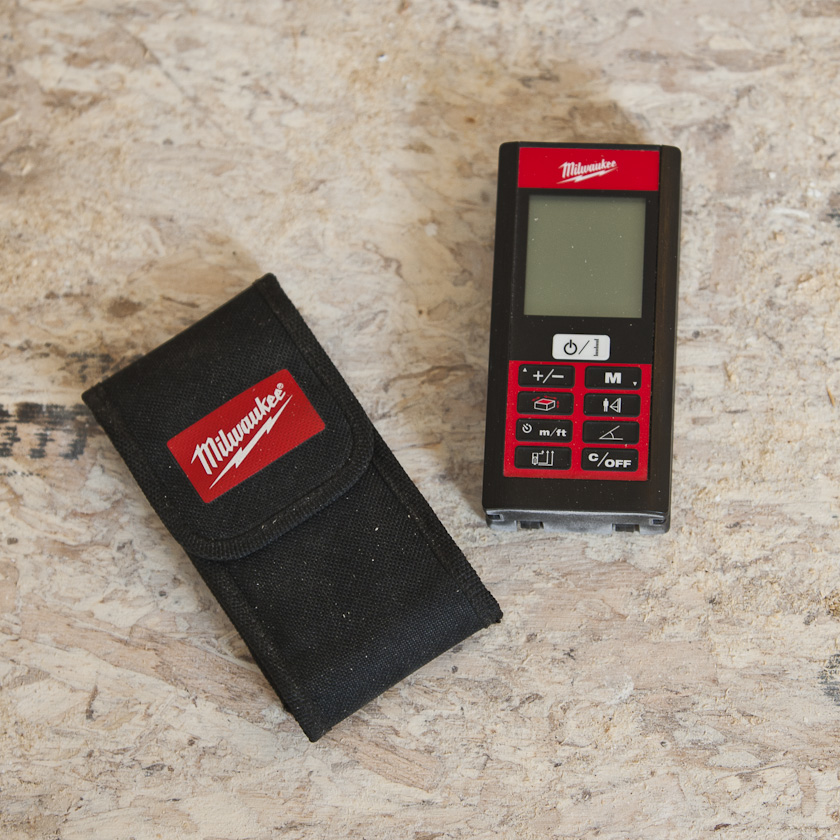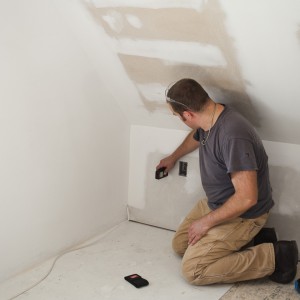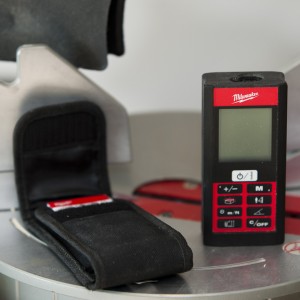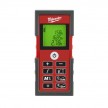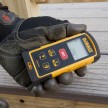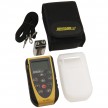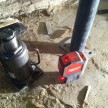Milwaukee Laser Distance Meter 2282-20
Milwaukee 260′ Laser Distance Meter 2282-20 Review
Laser distance meters put a huge amount of measuring and layout capability in the palm of your hand. While I doubt that the tape measure will ever go away, there are a lot of good reasons to have a laser distance measure in your tool box. Many of the laser distance meters available are difficult to use, having complicated interfaces and buttons that read like hieroglyphs rather than the buttons on a measurement tool. Milwaukee took note of this and designed a simpler, easier-to-use tool, the Milwaukee Laser Distance Meter 2282-20.
First impression
The button layout is simple and the symbols they used are easy to understand. The battery door is a little hard to open but that’s because it’s well sealed but still doesn’t require tools to open. Once the batteries are in it’s a pretty easy to figure out tool. Taking measurements just takes one button push and accessing the other features is simple and only requires a couple button presses at most. The included quick reference guide comes in a handy pocket in the case and will likely be about all that’s needed for a manual.
Accuracy
The Milwaukee Laser Distance Meter 2282-20 has fantastic accuracy. Claimed accuracy is plus or minus 1/16” but I’ve found that when compared to a tape measure the Laser Distance Meter is spot on. I’d argue that laser distance meters are more accurate than tape measures for inside measurements since you don’t need to try to fake the measurement from a bent tape or add the body of the tape measure to your measurement. I’ve been able to use the 2282-20 for measuring for interior trim and a nearly 14 foot-long built-in bench and received accurate measurements to 1/32”.
Milwaukee Laser Distance Meter On the job Site
Most laser distance meters really seem to be set up for use by people doing layouts and estimates. But Milwaukee has created a tool that is very useable on the job-site. By simplifying the navigation but still including a lot of advanced features, they’ve really hit the mark for a useable job-site tool that you’ll want to keep on hand at all times but which can still perform a lot of the advanced measuring tasks needed for large layouts and estimates.
For a working carpenter one of the most common ways to use a laser distance meter is to take measurements for cutting, either single cuts or creating a cut list. A lot of laser distance meters come with a feature that saves the last few measurements. This makes for a very quick and easy cut list when you’re on the job-site. Milwaukee has done this feature right. The 2282-20 saves the last 20 measurements and makes them easy to navigate. One button press recalls the most recent measurement and then you can click through the saved measurements in either ascending or descending order with two other buttons. This is a huge improvement over other laser distance meters I’ve used which have the saved measurements buried a few button presses down or have one button navigation so if you miss that measurement you were looking for you have to scroll back through all your saved measurements to get back to the one you need.
I really like using a laser distance meter for inside measurements because of the increased accuracy. The 2282-20 was not a disappointment here allowing me to take very accurate measurements for a built-in bench on an attic finishing project. I was able to take the overall measurement and use it to determine the dimensions of four individual boxes that would come together and make up the bench. When placed between the two outside walls the individual components came together and fit perfectly in the space. This critical measurement would not have been anywhere near as accurate with a tape measure.
The end bracket that’s used for making outside corner and certain inside corner measurements automatically changes the reference point for measuring from the base of the tool to the end of the bracket. In other words when you flip the bracket out the point of reference used for the measurement automatically changes to include the length of the bracket. This is a nice feature that helps improve accuracy and makes this laser distance meter more oops proof. The only problem here is that the bracket is not a pin shape which limits its use in some tighter spots, like interior measurements in some complicated attics.
Working in smaller cramped spaces is all too common for carpenters, especially remodelers. The 2282-20 makes it very easy to take measurements by yourself for layouts, estimates, and cutting even in the most cluttered of spaces because all you need is a small opening in the space to shoot that laser through. This is especially handy when doing estimates in occupied spaces.
There is a tilt sensor but it’s only used for indirect measurements using the Pythagorean theorem. This leads me to the one major spot for improvement I can see on this tool. I would love to have the level tilt sensor active during normal measuring which would help improve accuracy. If they could include a tilt sensor for vertical measurements as well that would be fantastic. This would also allow the tool to be used like a torpedo level.
Milwaukee also includes a stake-out feature, for regular increment layouts like wall studs or balusters. I could see this feature being especially useful for laying out gable end walls and balusters with oddball increments dependent on the pitch of the roof or stairway.
Specs
| Distance Range | 2″ to 260′ |
|---|---|
| Basic Accuracy | 1/16″ |
| Length Area Volume | Yes |
| Addition Subtraction | Yes |
| Memory Storage | Last 20 Readings |
| Display Back-light | Yes |
| Display Type | Black on White Display |
| IP Rating | IP54 |
| Tool Warranty | 5 Years |
| Battery Type | Alkaline (AAA) |
| Tripod Mount | Yes |
| Tracking | Yes |
| Inclination Sensor | ± 180° |
| Timer | 1-60 Seconds |
Overall Impression
A lot of the laser distance meters on the market have a similar set of features but Milwaukee has distinguished the Laser Distance Meter Deluxe from the crowd by adding some smart features like the automatic reference point end bracket for inside corner and edge measurements.
But most importantly they’ve simplified the keypad and interface and made it a simple to use but still very powerful tool that’s great for use on the job or for estimates and layouts. If you’re in the market for a laser distance meter the Milwaukee Laser Distance Meter 2282-20 should be at the top of your list.



